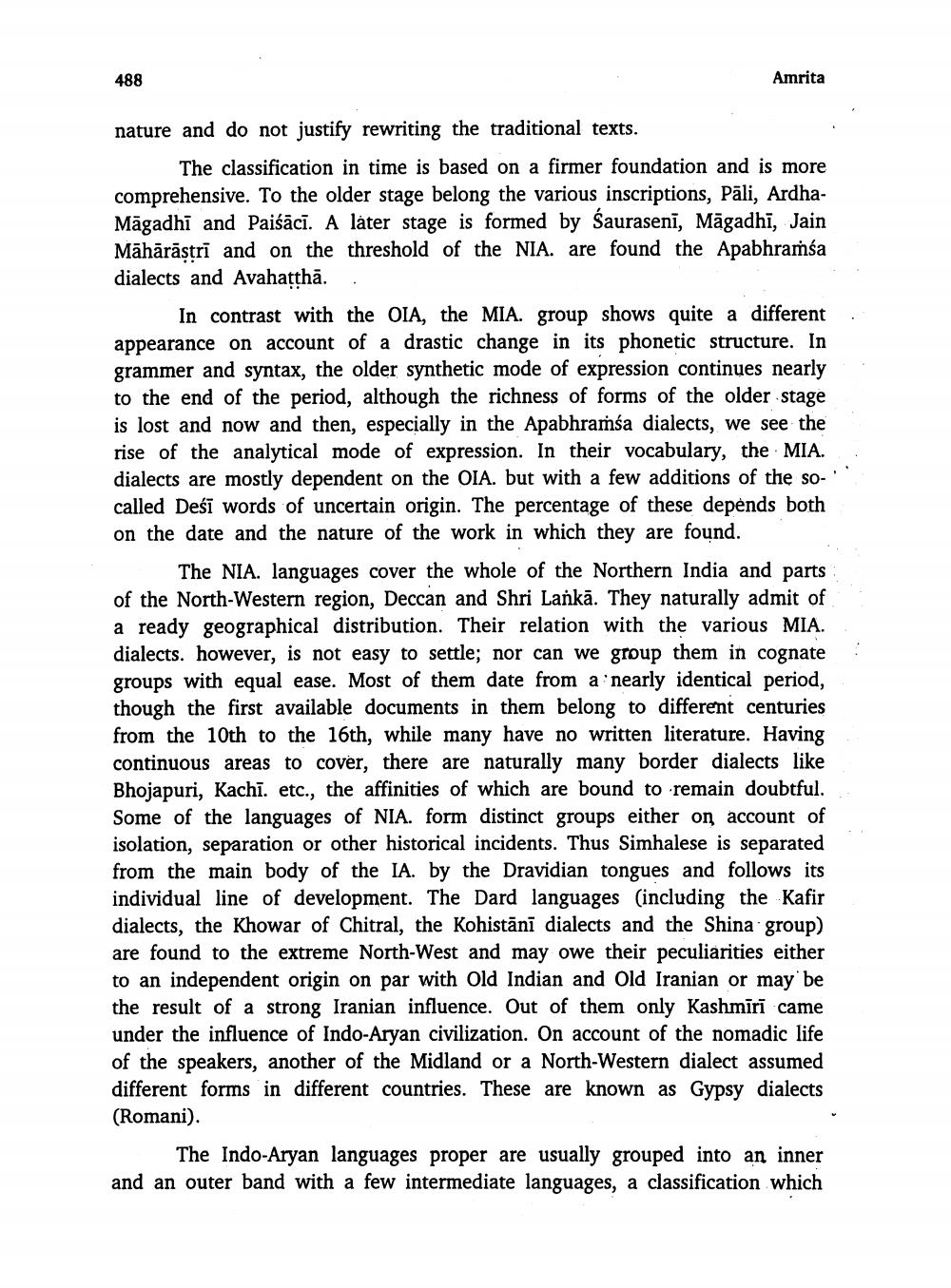________________
488
Amrita
nature and do not justify rewriting the traditional texts.
The classification in time is based on a firmer foundation and is more comprehensive. To the older stage belong the various inscriptions, Pāli, ArdhaMāgadhi and Paiśācī. A låter stage is formed by Saurasenī, Māgadhi, Jain Māhārāstri and on the threshold of the NIA. are found the Apabhramsa dialects and Avahatthā...
In contrast with the OIA, the MIA. group shows quite a different appearance on account of a drastic change in its phonetic structure. In grammer and syntax, the older synthetic mode of expression continues nearly to the end of the period, although the richness of forms of the older stage is lost and now and then, especially in the Apabhramba dialects, we see the rise of the analytical mode of expression. In their vocabulary, the MIA. dialects are mostly dependent on the OIA. but with a few additions of the socalled Deśī words of uncertain origin. The percentage of these depends both on the date and the nature of the work in which they are found.
The NIA. languages cover the whole of the Northern India and parts of the North-Western region, Deccan and Shri Lankā. They naturally admit of a ready geographical distribution. Their relation with the various MIA. dialects. however, is not easy to settle; nor can we group them in cognate groups with equal ease. Most of them date from a nearly identical period, though the first available documents in them belong to different centuries from the 10th to the 16th, while many have no written literature. Having continuous areas to cover, there are naturally many border dialects like Bhojapuri, Kachī. etc., the affinities of which are bound to remain doubtful Some of the languages of NIA. form distinct groups either on account of isolation, separation or other historical incidents. Thus Simhalese is separated from the main body of the IA. by the Dravidian tongues and follows its individual line of development. The Dard languages (including the Kafir dialects, the Khowar of Chitral, the Kohistānī dialects and the Shina group) are found to the extreme North-West and may owe their peculiarities either to an independent origin on par with Old Indian and Old Iranian or may be the result of a strong Iranian influence. Out of them only Kashmīrī came under the influence of Indo-Aryan civilization. On account of the nomadic life of the speakers, another of the Midland or a North-Western dialect assumed different forms in different countries. These are known as Gypsy dialects (Romani).
The Indo-Aryan languages proper are usually grouped into an inner and an outer band with a few intermediate languages, a classification which




